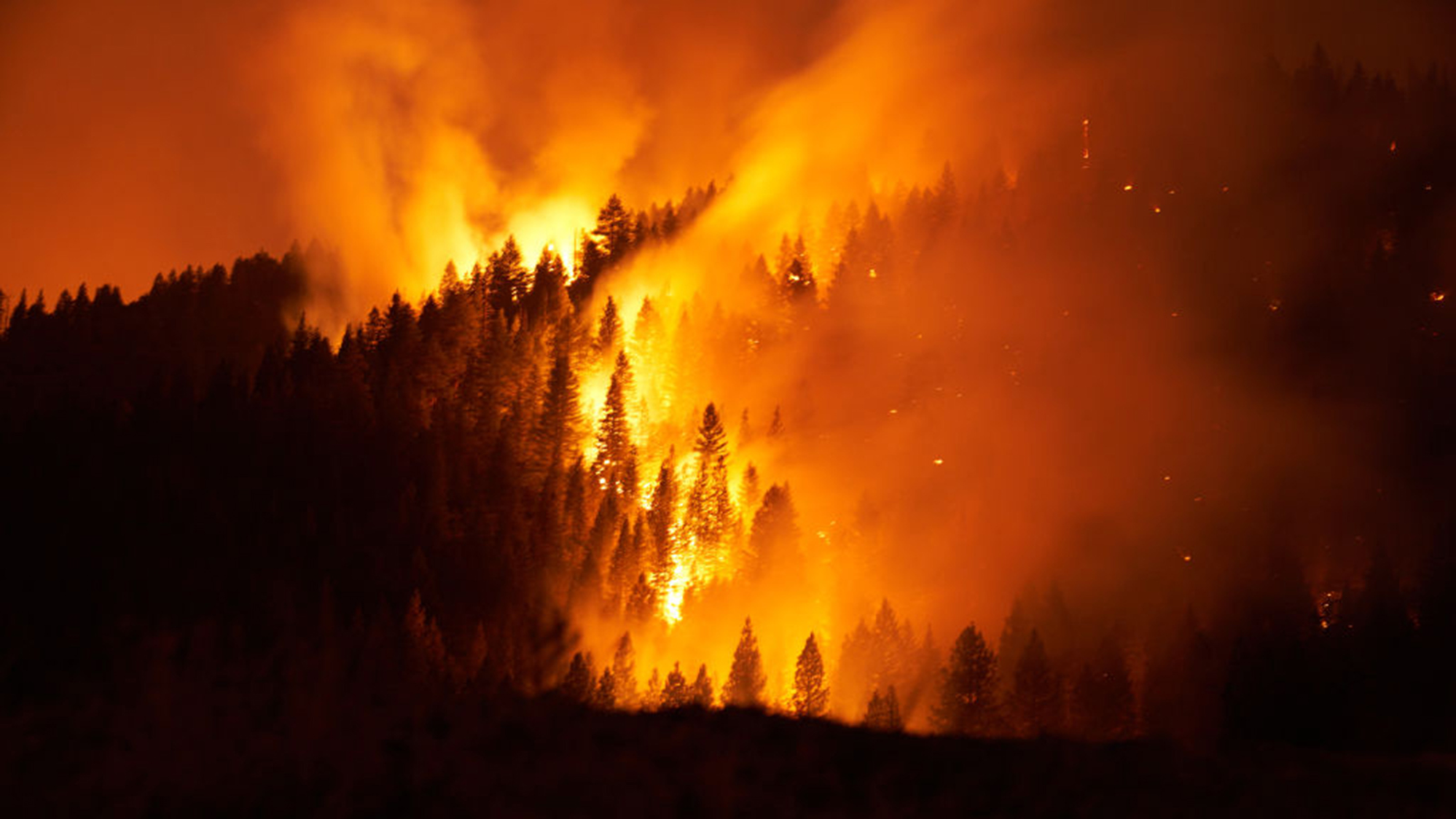With the massive Caldor and Dixie fires still burning, California’s fire season is on course to match the record 4.2 million acres burned last year.
September 8, 2021 – By Michael Cabanatuan – Source San Francisco Chronicle
Sep. 8—With the once-unstoppable Caldor Fire racing to the doorstep of South Lake Tahoe before it was steered away, and the Dixie Fire, the second largest in state history, still raging farther north, it’s been a hellish fire season in Northern California.
And it’s not over, Cal Fire Director Chief Thom Porter cautioned Tuesday morning.
“We are on a par with where we were last year,” he said during a briefing. “That’s sobering, that’s the new reality, that’s what we are looking at.”
Fires burned through roughly 2 million acres by this time in 2020, he said, on the way to a total of 4.2 million acres — the worst in the state’s long history of wildfires. So far this year, fires have again ripped through 2 million acres, with the devastation continuing.
“We could be in the same boat,” he said. “We’re right in the middle of wildfire peak season.”
Forecasters predict the next three months will bring more dry weather and bouts of gusty winds, Porter said.
“Fire activity will continue to grow,” he said.
Anthony Scardina, a deputy regional forester with the U.S. Forest Service, said hot and windy weather is expected across the state for the next two days.
Despite warming temperatures, firefighters took advantage of gentler winds to make progress on the Caldor Fire, which began its march toward Lake Tahoe more than three weeks ago. It was 50% contained Tuesday, and most South Lake Tahoe residents have been allowed to return home after a week under evacuation orders.
But the danger is not over. The fire, which erupted near Grizzly Flats in rural western El Dorado County on Aug. 14 and has burned through 217,000 acres, on Tuesday continued to threaten Kirkwood, the ski resort and small community south of Lake Tahoe on Highway 88.
While the fire remained calm in South Lake Tahoe, it was still active in Kirkwood, with fire spreading through the tops of trees and wind throwing flaming embers well ahead of the fire, starting spot fires more often than not.
“For every 10 sparks that land in the forest, nine of them light fire,” said Dominic Polito, a Caldor Fire spokesperson.
In addition to chasing and snuffing out spot fires, firefighters have been taking advantage of light winds to set backfires and burn off potential fuel around houses and other structures in the area, he said.
The Kirkwood area and other areas along Highway 88 remained evacuated. Thirty helicopters were expected to make water drops in the area on Tuesday, pouring hundreds of thousands of gallons on the fire.
Fire crews have extended containment lines from Meyers along Pioneer Trail in South Lake Tahoe, which allowed authorities to lift mandatory evacuation orders for most of the city, particularly the areas near the lake, said Jaime Moore, a spokesperson for the eastern edge of the fire.
Evacuation orders remained in effect near Heavenly Mountain resort, where crews were extinguishing some hot spots and keeping an eye out for small fires that start when sparks jump containment lines. Meyers and Christmas Valley, where the flames first entered the Tahoe Basin, also remained evacuated, in part due to danger from a large number of charred trees in danger of falling, Moore said.
“When you’re looking at South Lake Tahoe itself, mostly the threat is gone, but obviously we don’t want to get complacent and say the threat is gone,” he said. “Mother Nature has been working in our favor, but things can change.”
Crews were keeping an eye on the winds, which had been light and from the west but were forecast to shift to the southwest and may pick up speed, Moore said.
Mark Ghilarducci, California Office of Emergency Services director, urged returnees to remain vigilant.
“Even though these area have been repopulated, it’s still important to remember that we have active fire in the areas. We are not out of the woods yet.”
Forty miles away on the west end of the fire, in addition to Kirkwood, the blaze was most active in the Wrights Lake area, where fire crews have to hike in or get dropped in, Polito said. Much of the area near where the fire started has had evacuation orders lifted, and residents returned over the weekend — except in the town of Grizzly Flats, which was devastated by the fire and is filled with utility crews and tree trimmers.
Despite the voracity of this year’s fires, Cal Fire’s Porter said firefighters have saved several communities from the flames: South Lake Tahoe, Meyers, Pollock Pines, Sly Park, Hayfork, Willits, Chester, Lake Almanor West, Westwood, Susanville and Janesville.
“All were protected, all are still intact,” he said. “We’ve been able to herd these fires outside and around the main community corridors. Unfortunately, we haven’t been able to do that everywhere, but these are some of the large communities that have been protected.”
The Dixie Fire, which ignited July 14 and is still burning across five counties to the north of the Caldor Fire, was 59% contained on Tuesday. The Dixie Fire had grown to more than 919,000 acres — threatening to rival California’s largest wildfire, the August Complex, which consumed 1,032,648 acres last year.
Near Auburn in Placer County, evacuations were lifted Tuesday for the Bridge Fire, which was 411 acres and 50% contained after erupting Sunday under the Foresthill Bridge. The Auburn State Recreation Area remained closed.
(c)2021 the San Francisco Chronicle
Visit the San Francisco Chronicle at www.sfchronicle.com
Distributed by Tribune Content Agency, LLC.
